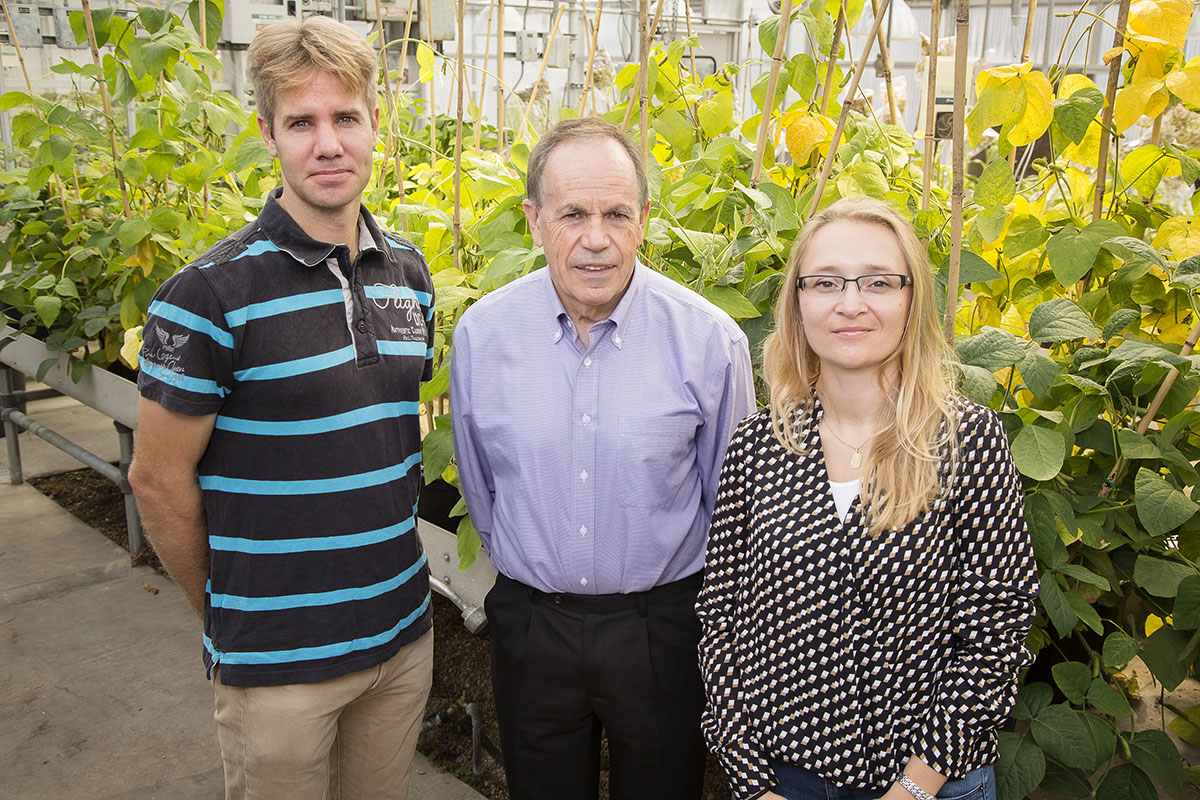Agriculture already monopolizes 90 percent of global freshwater yet production still needs to dramatically increase to feed and fuel this century's growing population. For the first time, scientists have improved how a crop uses water by 25 percent without compromising yield by altering the expression of one gene that is found in all plants, as reported in Nature Communications.
The research is part of the international research project Realizing Increased Photosynthetic Efficiency (RIPE) that is supported by Bill & Melinda Gates Foundation, the Foundation for Food and Agriculture Research, and the U.K. Department for International Development.
The international team increased the levels of a photosynthetic protein (PsbS) to conserve water by tricking plants into partially closing their stomata, the microscopic pores in the leaf that allow water to escape. Stomata are the gatekeepers to plants: When open, carbon dioxide enters the plant to fuel photosynthesis, but water is allowed to escape through the process of transpiration.
The team improved the plant's water-use-efficiency the ratio of carbon dioxide entering the plant to water escaping by 25 percent without significantly sacrificing photosynthesis or yield in real-world field trials. The carbon dioxide concentration in our atmosphere has increased by 25 percent in just the past 70 years, allowing the plant to amass enough carbon dioxide without fully opening its stomata. "Evolution has not kept pace with this rapid change, so scientists have given it a helping hand. Four factors can trigger stomata to open and close: humidity, carbon dioxide levels in the plant, the quality of light, and the quantity of light. This study is the first report of hacking stomatal responses to the quantity of light.
PsbS is a key part of a signaling pathway in the plant that relays information about the quantity of light. By increasing PsbS, the signal says there is not enough light energy for the plant to photosynthesize, which triggers the stomata to close since carbon dioxide is not needed to fuel photosynthesis.
This research complements previous work, published in Science, which showed that increasing PsbS and two other proteins can improve photosynthesis and increase productivity by as much as 20 percent. Now the team plans to combine the gains from these two studies to improve production and water-use by balancing the expression of these three proteins.
For this study, the team tested their hypothesis using tobacco, a model crop that is easier to modify and faster to test than other crops. Now they will apply their discoveries to improve the water-use-efficiency of food crops and test their efficacy in water-limited conditions.
